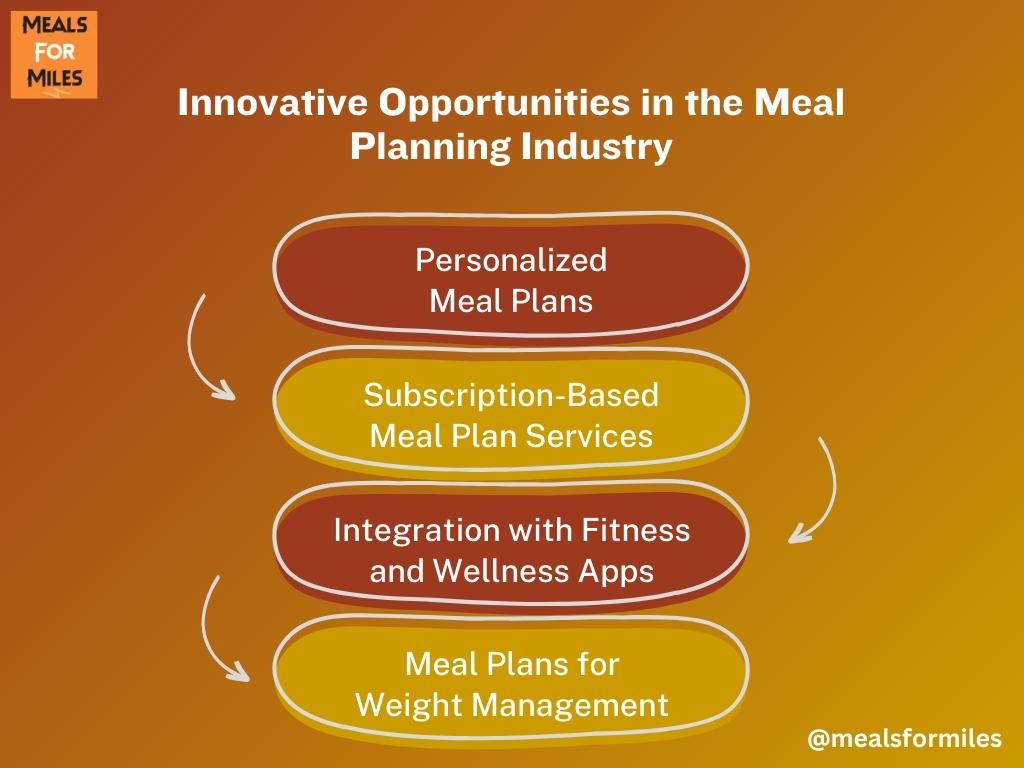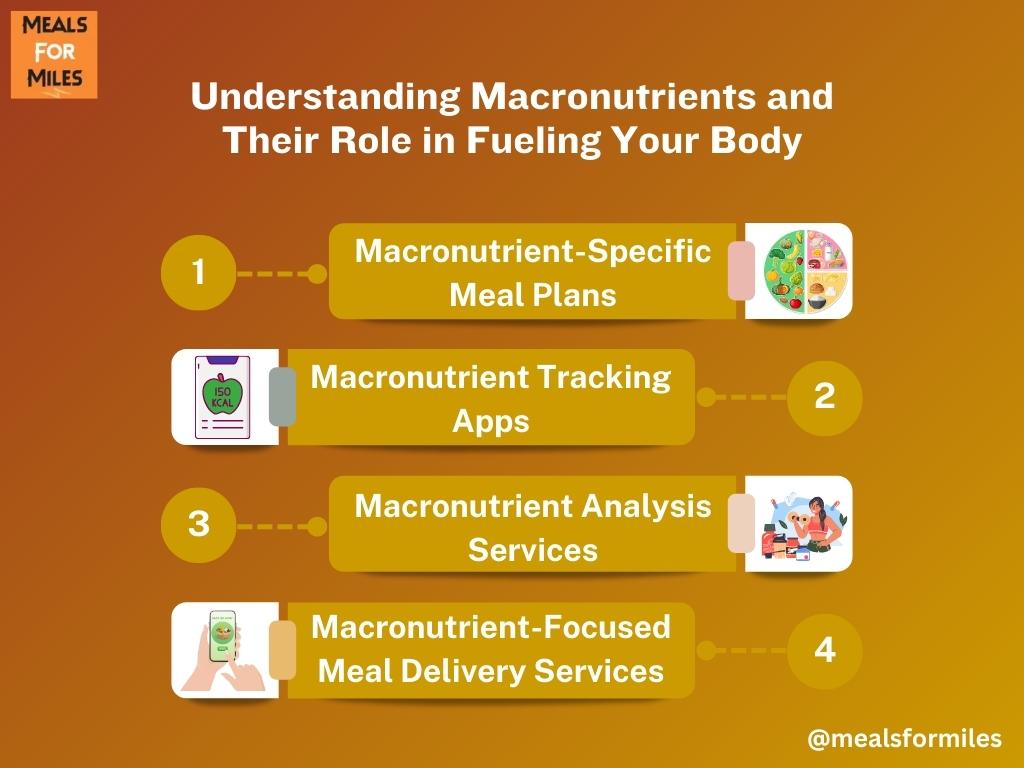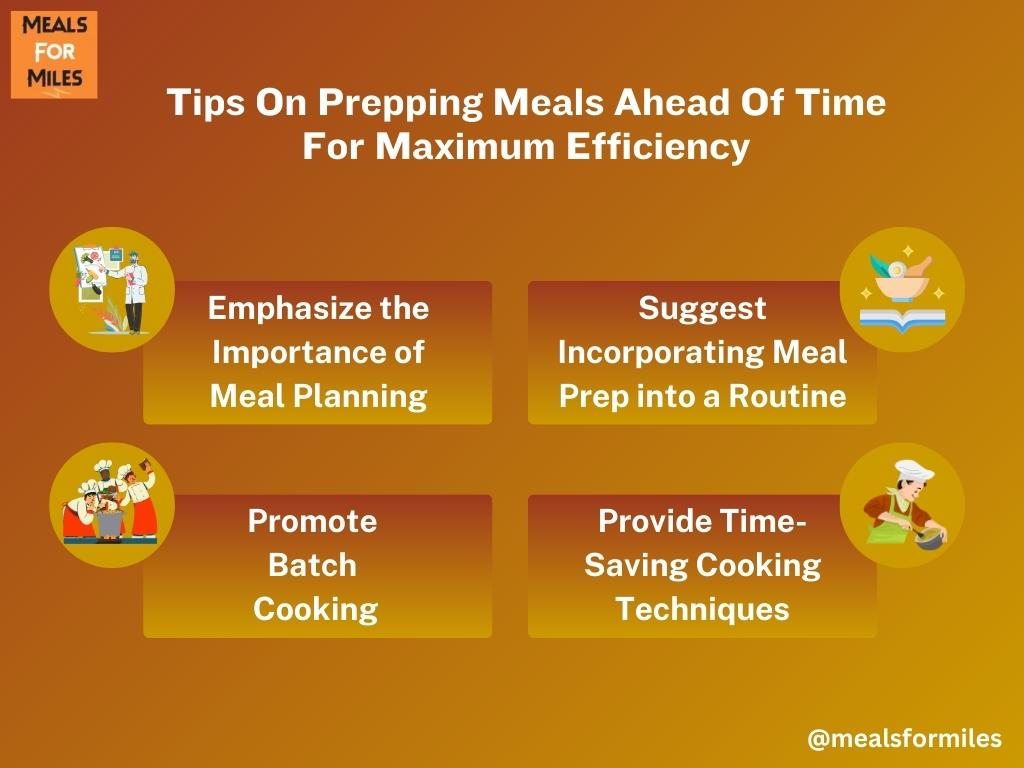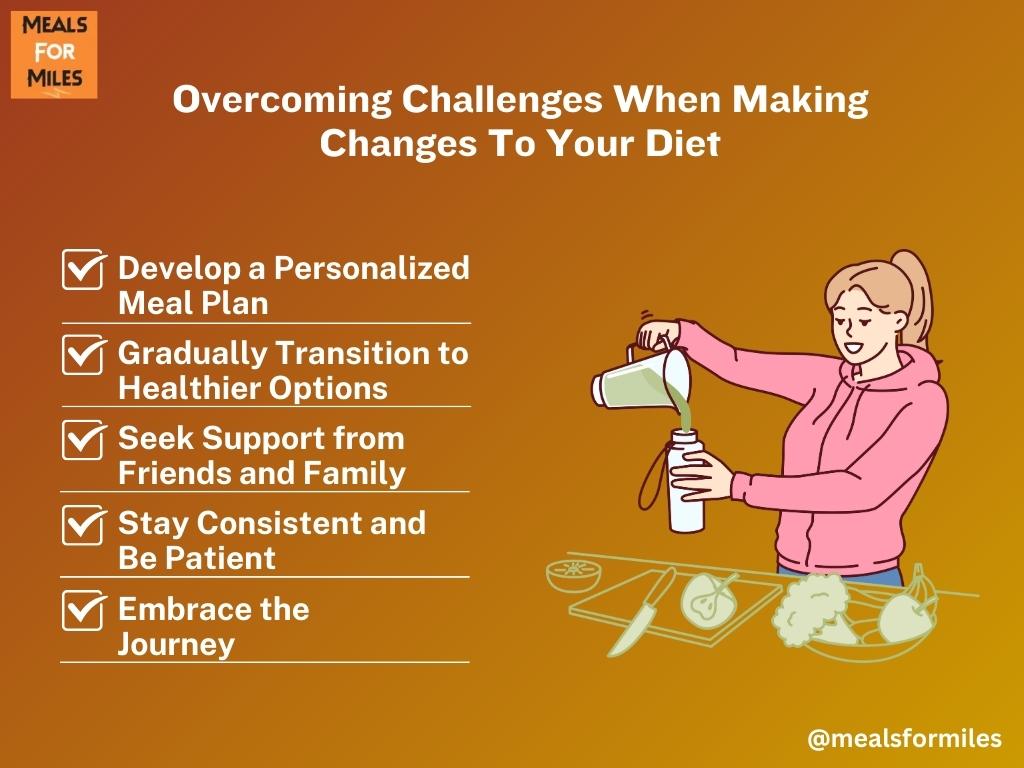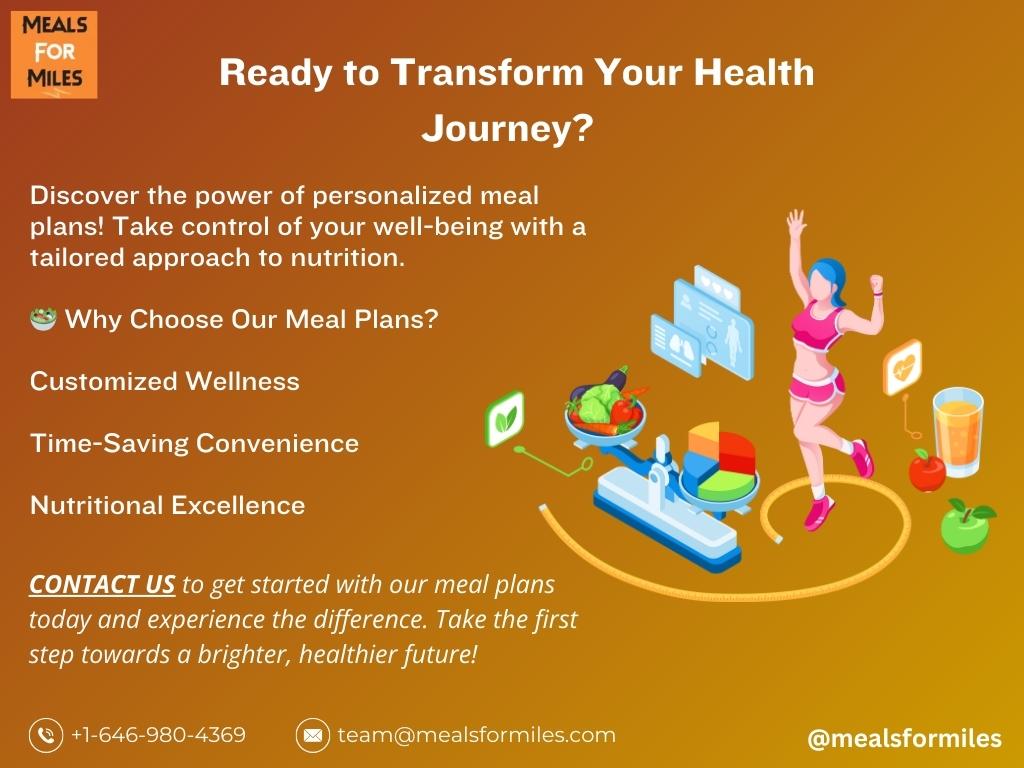Ready to take control of your health and transform your eating habits?
Start your journey towards a healthier, happier you with our comprehensive meal planning services and top-quality products today! Achieve a balanced diet, streamline your grocery shopping, and harness the power of technology for smarter meal planning. Say goodbye to unhealthy eating habits and hello to a vibrant, energetic lifestyle.
Meal planning is a crucial practice for enhancing health and achieving weight loss objectives. It involves creating a balanced diet with nutrient-rich foods and understanding the role of macronutrients. Smart shopping strategies, meal prepping, and technology can make it affordable and efficient. Gradual dietary changes and portion control help overcome challenges, while a meal plan aids in monitoring calorie intake for weight loss. Meal planning is a valuable tool for long-term well-being and weight management.
Table of Contents
- Introduction to Meal Planning: Why It’s Important for Your Health
- What Is a Meal Plan and How Can It Help?
- Creating a Balanced Diet With Nutrient-rich Foods
- Understanding Macronutrients and Their Role in Fueling Your Body
- Smart Shopping Strategies To Make Healthy Eating Affordable
- Tips On Prepping Meals Ahead Of Time For Maximum Efficiency
- Using Technology To Streamline The Meal Planning Process
- Overcoming Challenges When Making Changes To Your Diet
- Benefits Of Utilizing A Meal Plan For Weight Loss Goals
- Final Thoughts
Introduction to Meal Planning: Why It’s Important for Your Health
Meal planning is the process of planning out what meals you’ll be eating throughout the day, week, or even month in advance. This practice can help you maintain a balanced diet that meets all your nutritional needs and boosts your overall health. By taking control of your meal plan, you can improve both physical and mental wellbeing.
What Is a Meal Plan and How Can It Help?
A meal plan is essentially an outline for how you’ll approach food throughout the day. Depending on how detailed it is, it could include everything from what types of food to eat, when to eat them, and where to buy them. A good meal plan should be tailored to meet specific nutritional needs based on age, lifestyle habits such as exercise levels and activity level.
Here are the 10 Innovative Opportunities in the Meal Planning Industry:
- Personalized Meal Plans: Offer personalized meal plans tailored to individual nutritional requirements, dietary restrictions, and health goals. Provide online assessments or consultations with nutritionists to create customized plans.
- Meal Plans for Different Lifestyles: Develop meal plans for various lifestyles, including athletes, busy professionals, families, and specific diets like vegan or gluten-free. Provide guidance on portion sizes, nutrient-dense foods, and meal prep ideas.
- Subscription-Based Meal Plan Services: Create meal plan delivery services with pre-packaged meals tailored to dietary needs and preferences. Customers can subscribe for convenient, nutritious meal delivery on a regular basis.
- Collaborations with Grocery Stores: Partner with grocery stores to offer meal plans. Create meal plan sections in stores, provide recipes and shopping lists, and offer discounts on specific ingredients or products.
- Integration with Fitness and Wellness Apps: Integrate meal planning services with fitness and wellness apps. Users can track food intake, monitor progress, and receive personalized recommendations based on their meal plan and exercise routine.
- Corporate Wellness Programs: Incorporate meal plans into employee wellness programs. Offer nutrition workshops, access to dietitians, or healthy catered lunches to encourage healthier eating habits among employees.
- Meal Plans for Special Populations: Develop meal plans for individuals with specific health conditions, such as diabetes, heart disease, or food allergies. Ensure these plans provide appropriate nutrients while managing the condition.
- Educational Resources: Create educational resources like cookbooks, online guides, or mobile apps to help individuals understand meal planning and provide tools and knowledge for creating personalized meal plans.
- Collaboration with Fitness Influencers: Partner with fitness influencers or celebrities to promote meal planning benefits. Utilize endorsements, social media campaigns, or events focused on healthy eating and meal preparation.
- Meal Plans for Weight Management: Design meal plans specifically for weight loss or weight management. Focus on portion control, balanced macronutrients, and foods that support satiety and metabolic health.
Creating a Balanced Diet With Nutrient-rich Foods
Creating a balanced diet with nutrient-rich foods is key when it comes to maintaining optimal health levels over time. Macronutrients play an important role in providing our bodies with energy sources that are necessary for proper functioning. There are three macronutrients: carbohydrates (starches), proteins (meat/fish/eggs), and fats (oils). Each has its own unique benefits when consumed in moderation; carbohydrates provide energy for physical activity while fats aid in digestion processes; proteins help build muscle mass as well as repair tissue damage caused by exercise or illness.
Here are the 10 Strategies for Promoting Nutrient-Rich Diets and Sustainable Food Practices:
- Promoting the Importance of a Balanced Diet: Educate the public through platforms like social media, blogs, and partnerships with health organizations to emphasize the significance of a balanced diet.
- Developing Nutrient-Rich Food Products: Focus on creating innovative food products packed with essential nutrients, including fortified and functional foods, and meal replacements that provide all necessary macronutrients.
- Collaborating with Nutritionists and Dieticians: Work closely with nutritionists and dieticians to develop meal plans and recipes emphasizing nutrient-rich foods. Create customized dietary solutions for individuals with specific health concerns.
- Encouraging Sustainable Farming Practices: Promote sustainable farming practices, support organic farming methods, reduce pesticide and GMO use, and encourage local and seasonal produce.
- Providing Nutritional Information and Labeling: Ensure consumers have access to accurate nutritional information through clear and standardized labeling on food products.
- Conducting Research and Development: Invest in research to identify new sources of nutrient-rich foods and enhance existing products. Explore alternative protein sources, healthy fats, and innovative fortification methods.
- Collaborating with Schools and Educational Institutions: Partner with schools and educational institutions to implement nutrition education programs, including workshops, cooking classes, and interactive sessions for children and young adults.
- Engaging in Public Health Campaigns: Actively participate in public health campaigns that promote the benefits of consuming nutrient-rich foods, including sponsoring events and supporting awareness campaigns.
- Supporting Government Initiatives: Work with government bodies to support initiatives improving nutritional status. Advocate for policies promoting access to affordable, nutrient-rich foods and programs addressing food insecurity and malnutrition.
- Embracing Technology and Innovation: Stay updated with technological advancements and innovations in the food industry. Leverage technologies like blockchain for supply chain traceability, artificial intelligence for personalized nutrition solutions, and novel food processing techniques to preserve nutrient content.
Understanding Macronutrients and Their Role in Fueling Your Body
Macronutrients, including carbohydrates, proteins, and fats, play vital roles in fueling the body. Carbohydrates provide energy through glucose molecules, which are broken down into simpler sugars during digestion. These sugars enter the bloodstream and are used by cells for bodily functions.
Proteins provide essential amino acids that act as building blocks for cells, supporting tissue formation and repair during times of stress or illness. Fats have important functions such as insulation around organs and communication between cells. To maintain a balanced diet, it is necessary to consume a variety of foods from different food groups at each meal to obtain all necessary macronutrients.
Here are the 10 Innovative Approaches to Understanding and Optimizing Macronutrient Intake:
- Macronutrient-Specific Meal Plans: Create tailored meal plans focusing on specific macronutrient needs, such as high-protein or low-carb options, to accommodate individuals with specific dietary requirements or goals.
- Macronutrient Tracking Apps: Develop mobile apps for tracking macronutrient intake, offering personalized recommendations, barcode scanning for food item logging, and educational resources on macronutrients.
- Macronutrient Education Programs: Establish educational programs in schools, workplaces, and community centers to teach individuals about macronutrients’ importance and how to incorporate them into their diets through workshops, seminars, and interactive activities.
- Macronutrient Analysis Services: Provide services analyzing individuals’ diets and offering recommendations for optimizing macronutrient intake, including personalized meal plans, grocery lists, and recipes to help them achieve their health goals.
- Macronutrient-Focused Food Products: Develop a line of food products formulated with specific macronutrient ratios, catering to different dietary needs, such as high-protein snacks for athletes or low-carb options for those following ketogenic diets.
- Macronutrient Consulting for Food Manufacturers: Offer consulting services to food manufacturers to help them develop products high in particular macronutrients, providing expertise in recipe formulation, ingredient sourcing, and nutritional compliance.
- Macronutrient-Focused Meal Delivery Services: Launch meal delivery services providing pre-prepared meals designed to meet specific macronutrient needs, benefiting individuals with limited time or cooking skills who seek a balanced diet.
- Macronutrient-Focused Cookbooks: Publish cookbooks featuring recipes designed for a balanced mix of macronutrients, including options for various dietary preferences (e.g., vegetarian, gluten-free) to cater to diverse individuals.
- Macronutrient Workshops for Healthcare Professionals: Provide workshops and training sessions for healthcare professionals to enhance their understanding of macronutrients’ impact on health, enabling them to offer more comprehensive dietary advice to patients.
- Macronutrient Testing Kits: Develop at-home testing kits for measuring macronutrient levels, offering personalized recommendations based on test results to help individuals make informed dietary choices.
Smart Shopping Strategies To Make Healthy Eating Affordable
To make healthy eating affordable, it is important to shop strategically. This can be done by creating a budget before grocery shopping, checking sales flyers for discounts, and shopping online for cheaper prices. Utilizing coupons and taking advantage of loyalty programs can also help save money. Opting for frozen produce can be a cost-effective way to get essential vitamins, as long as it is free of added salt. Planning meals in advance and cooking instead of buying pre-packaged options can also save money.
- Introduce Subscription Services: Collaborate with grocery stores to offer subscription-based services for regular delivery of fresh produce and pantry staples at discounted rates.
- Implement Cashback Programs: Partner with financial institutions or grocery stores to offer cashback programs specifically for healthy food purchases, encouraging healthier choices and savings.
- Develop Meal Planning Apps: Create user-friendly apps that generate healthy meal plans based on dietary preferences and budgets, also suggesting affordable alternatives for expensive ingredients.
- Collaborate with Local Farmers: Establish partnerships with local farmers or community-supported agriculture programs to offer discounted prices on fresh, locally sourced produce.
- Offer Cooking Classes and Workshops: Organize low-cost cooking classes and workshops to educate consumers on preparing nutritious meals using affordable ingredients.
- Encourage Bulk Buying: Promote bulk buying of staple items like grains, legumes, and spices in collaboration with grocery stores to help consumers save money in the long run.
- Provide Educational Resources: Develop online platforms or apps offering nutritional information, budgeting tips, and recipe ideas for healthy eating.
- Create Partnerships with Food Delivery Services: Collaborate with food delivery services to offer discounted or subsidized healthy meal options for time-strapped individuals.
- Establish Community Gardens: Support the creation of community gardens in urban areas, allowing residents to grow their own fresh produce and reduce reliance on expensive store-bought options.
- Advocate for Policy Changes: Work with policymakers to advocate for policies that support affordable healthy eating, such as tax incentives and subsidies for low-income individuals.
Overall, these strategies would help make healthy eating more affordable by providing consumers with resources, incentives, and opportunities to access and purchase nutritious foods at a lower cost.
Tips On Prepping Meals Ahead Of Time For Maximum Efficiency
To maximize efficiency in meal planning, it is recommended to prep meals ahead of time. This involves cooking batches of ingredients like grains and vegetables, which can be stored in the fridge and used for multiple nights. Doubling recipes can also provide leftovers for two days. Using the same ingredient in multiple recipes can improve nutrition and budgeting. Investing in a slow cooker or crockpot can further streamline the cooking process by allowing ingredients to be thrown together in the morning and cooked over a few hours. This saves both time and money in the long run.
Here are the 10 Guidelines for Efficient Meal Prepping and Time-Saving Cooking Techniques:
- Emphasize the Importance of Meal Planning: Stress the significance of meal planning to save time, money, and reduce food waste.
- Provide Tips for Efficient Meal Prep: Share specific strategies for effective meal prepping, including creating weekly meal plans and organizing ingredients.
- Promote Batch Cooking: Explain the benefits of batch cooking, where larger quantities of ingredients are prepared at once and used for multiple meals throughout the week.
- Suggest Versatile Ingredients: Encourage the use of versatile ingredients like grains, vegetables, and proteins that can be used in various recipes.
- Highlight the Benefits of Leftovers: Showcase the convenience of doubling recipes to have leftovers for future meals, especially for busy individuals or families.
- Recommend Investing in Kitchen Appliances: Suggest investing in time-saving kitchen appliances like slow cookers or crockpots.
- Provide Time-Saving Cooking Techniques: Share cooking techniques such as pressure cooking and one-pot recipes to speed up meal preparation.
- Offer Tips for Proper Storage: Guide individuals on how to store prepped meals properly to maintain freshness and prevent spoilage.
- Suggest Incorporating Meal Prep into a Routine: Encourage making meal prepping a regular part of one’s routine and provide tips to make it enjoyable.
- Provide Resources and Tools: Recommend cookbooks, websites, meal planning apps, and online communities to support individuals in their meal prep journey.
Using Technology To Streamline The Meal Planning Process
Technology has made meal planning easier and more efficient. There are various apps and websites, like MyFitnessPal, PlateJoy, and Yummly, that offer features to help users create healthy and balanced menus. These platforms allow users to track their daily calories and customize their meal plans based on their dietary preferences and nutritional needs. While some services are free, others may require a subscription fee. It is important to read reviews and testimonials to choose a service that meets individual requirements. Overall, technology has made meal planning more convenient and personalized for those seeking a healthy lifestyle.
Here are the 10 Strategies for Using Technology to Streamline the Meal Planning Process:
- Integration with Grocery Delivery Services: Meal planning apps could partner with grocery delivery services to streamline the shopping process by allowing users to add ingredients from their meal plans directly to their shopping carts.
- AI-Powered Recipe Suggestions: Implement artificial intelligence algorithms to analyze users’ preferences and provide personalized recipe suggestions based on their dietary goals and past meal choices.
- Virtual Meal Planning Assistants: Introduce virtual assistants within meal planning apps to provide real-time suggestions, answer user questions, offer cooking tips, and enhance the overall meal planning experience.
- Integration with Smart Kitchen Appliances: Meal planning apps could integrate with smart kitchen appliances, providing users with step-by-step cooking instructions and ensuring meals are prepared accurately.
- Collaborative Meal Planning: Facilitate collaborative meal planning among family members or roommates, allowing shared meal plans, task delegation, and options to split grocery bills.
- Meal Planning for Specific Dietary Restrictions: Develop specialized meal planning apps tailored to specific dietary restrictions, such as gluten-free, dairy-free, or vegan diets, offering users a more focused and personalized experience.
- Recipe Customization: Allow users to customize recipes to their taste preferences and dietary needs, including adjusting portion sizes, substituting ingredients, or suggesting alternative recipes based on available pantry items.
- Integration with Fitness Tracking Apps: Enable integration with fitness tracking apps to help users align their meal plans with their fitness goals by tracking calorie intake and expenditure.
- Nutritional Coaching: Offer personalized nutritional coaching services within meal planning apps, connecting users with registered dietitians or nutritionists for guidance and support in creating healthy meal plans.
- Virtual Cooking Classes: Provide virtual cooking classes or tutorials within meal planning apps, guiding users through the preparation of selected recipes and enhancing their cooking skills and confidence.
Overcoming Challenges When Making Changes To Your Diet
When making changes to your diet, many people struggle with the fear of change and giving up their favorite foods. However, it’s important to start small and gradually replace unhealthy snacks with healthier options like whole grains, fruits, and vegetables. Finding a few favorite recipes and experimenting with different flavors can add variety and prevent boredom. By staying committed to these dietary changes long-term, you are more likely to succeed in adopting a healthier lifestyle.
Here are the 10 Strategies for Overcoming Challenges When Making Dietary Changes:
- Develop a Personalized Meal Plan: Consider working with a nutritionist or dietitian to create a tailored meal plan that aligns with your goals and preferences, providing structure and guidance for your dietary changes.
- Educate Yourself About Nutrition: Gain a deeper understanding of nutrition by attending workshops or reading books authored by industry experts. Knowledge about the benefits of healthier foods can motivate you to make informed choices.
- Gradually Transition to Healthier Options: Instead of abruptly eliminating favorite foods, ease into dietary changes by gradually replacing them with healthier alternatives. For example, switch to whole wheat pasta or try baked sweet potato fries as substitutes.
- Find Healthier Versions of Favorite Recipes: Experiment with ingredients and cooking methods to create healthier versions of beloved dishes. For instance, use avocado or Greek yogurt as mayo alternatives, maintaining the flavors you enjoy while making more nutritious choices.
- Stock Up on Healthy Snacks: Combat the temptation of unhealthy snacks by keeping your pantry stocked with nutritious options like nuts, seeds, and dried fruits. These choices can help you manage cravings while supplying essential nutrients.
- Seek Support from Friends and Family: Share your dietary goals with loved ones and encourage them to join you on your journey to a healthier lifestyle. A support system can provide motivation and accountability to overcome the fear of change.
- Celebrate Small Victories: Acknowledge and celebrate your progress by setting achievable goals and rewarding yourself when you attain them. Positive reinforcement will boost your commitment and motivation for ongoing dietary changes.
- Stay Consistent and Be Patient: Understand that changing your diet is a gradual process requiring consistency and patience. Allow time for your taste buds to adjust and your body to adapt. Focus on long-term success rather than quick fixes.
- Explore New Flavors and Cuisines: Prevent monotony by incorporating variety into your diet. Explore different cuisines and experiment with new recipes featuring healthy ingredients. This approach broadens your palate and nutrient intake.
- Embrace the Journey: Recognize that altering your diet is a journey toward improved health and well-being. Embrace the process, practice self-compassion, and keep in mind that every small step contributes to your overall progress. Maintain a positive mindset and prioritize long-term benefits over quick solutions.
Benefits Of Utilizing A Meal Plan For Weight Loss Goals
Many people turn towards weight loss plans to lose excess pounds successfully. However, maintaining a healthy weight requires patience and dedication. Planning ahead allows you to keep better track of the calories consumed and makes it easier to monitor progress. This is especially true for individuals who struggle with portion control.
Portioned servings allow you to prevent overeating because the portions are already predetermined beforehand. Additionally, using measuring cups and spoons to accurately measure serving sizes rather than eyeballing them ensures the right amount of food is being taken, thereby promoting a steady rate of fat loss.
Here are the 8 Key Benefits of Implementing a Meal Plan for Achieving Weight Loss Goals:
- Accuracy and Consistency: Utilizing a meal plan ensures precise measurement and tracking of food intake, maintaining a consistent calorie deficit necessary for weight loss. Following a predetermined plan instills confidence in consuming the correct calorie and nutrient quantities.
- Time-Saving: Meal planning saves time by eliminating the need for spontaneous, potentially unhealthy choices. With a plan, efficient grocery shopping and meal prep reduce decision-making and food preparation time throughout the week.
- Variety and Balance: Well-designed meal plans offer diverse, nutritious foods, preventing nutrient deficiencies and promoting a balanced diet with appropriate portions from all food groups.
- Accountability and Motivation: Meal plans provide structure and accountability, helping individuals stay on track with weight loss goals. Clear plans act as motivating tools, reinforcing the commitment needed for success.
- Stress Reduction: Meal planning alleviates stress related to food decisions, reducing decision fatigue and anxiety. A predefined plan simplifies meal choices, leading to a more relaxed approach to weight loss.
- Education and Awareness: Following a meal plan enhances understanding of portion sizes, nutrient content, and balanced meal composition. This knowledge empowers individuals to make healthier choices beyond the plan, facilitating sustainable, long-term weight loss.
- Support and Guidance: Many meal plans include additional support resources, such as access to nutritionists or online communities. These resources offer valuable advice, answer questions, and provide motivation throughout the weight loss journey.
- Long-Term Habit Formation: Meal plans promote the development of healthier eating habits that can be maintained after reaching the goal weight. Consistent nutritious choices and portion control lay the foundation for long-term success in maintaining a healthy weight.
Overall, utilizing a meal plan for weight loss goals offers numerous benefits, including accuracy, time-saving, variety, accountability, stress reduction, education, support, and long-term habit formation. It can be an effective tool for individuals seeking to lose weight and maintain a healthy lifestyle.
Final Thoughts
Meal planning is an important practice for maintaining optimal health and achieving weight loss goals. By creating a balanced diet with nutrient-rich foods and understanding the role of macronutrients in fueling the body, individuals can improve their physical and mental wellbeing. Smart shopping strategies and prepping meals ahead of time can help make healthy eating affordable and efficient.
Utilizing technology, such as meal planning apps and websites, can streamline the process and make it easier to track progress. Overcoming challenges and gradually making changes to one’s diet can lead to long-term success and prevent boredom. Lastly, utilizing a meal plan for weight loss goals can help individuals monitor their calorie intake and portion sizes, promoting steady fat loss. Overall, meal planning is a valuable tool for improving health and achieving weight loss goals.
Don’t let the fear of change hold you back. Start small, and with our guidance, you’ll gradually make lasting improvements in your diet. Whether you’re aiming to lose weight, boost your energy, or simply enjoy better health, our meal planning solutions have you covered.
Join the countless individuals who have already experienced the benefits of our services. Take the first step towards a healthier future – Contact us now and embark on a journey to a better you!


